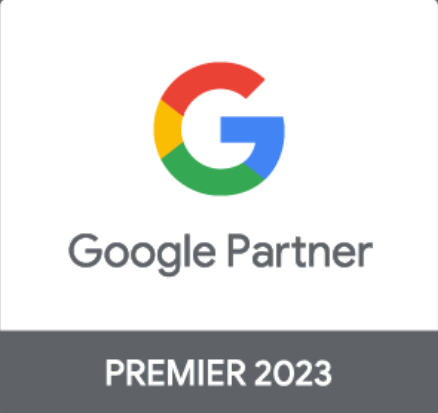Everyone who runs digital ads wants it to be successful and get the most of the ad spend. But how exactly do you make an ad campaign successful? Why are some ads excellent and some a failure?
Though there is no magic formula for an effective ad, there are some common components of ads that drive results. Let’s take a look at the key components of successful ads on different channels.
Before creating an ad campaign
An ad’s success depends a lot on certain prerequisites. So, let’s discuss what external components you need before starting to create your ad campaign.
Before creating an ad campaign for your eCommerce website, you need to make sure you have certain things in place. Here’s your three-point checklist in ensuring you are ready to start your ad campaign:
- Clearly define your target audience:
An ad without a clear target audience is like shooting an arrow blindly. Create your ideal buyer persona and target your ads to them. According to a study, every year, $37 billion is wasted in ad spend because of ads that fail to engage the target audience.
Your target audience refers to the specific group of online consumers who are most likely to purchase your product or service.
Your target audience can be determined by several factors such as:
Age
Gender
Hobbies
Education level and profession
Location
Interests
Purchase intention
Subculture. - A functional eCommerce website:
While it is possible to run ads with just a social media account, having an eCommerce website has many benefits.
While on a social media platform, there will be a lot of back and forth when it comes to placing an order. With your own online store, you can showcase your products and collect orders easily and efficiently. So, your customers get a better overall shopping experience.
For a successful ad campaign, you need to make sure that your website is well optimized:
Make sure your online store is mobile-friendly
Offer multiple payment options on your store
Keep the order and sales process simple to avoid abandoned cart
Key components of a successful Facebook Ad
Facebook is the best choice if you want to reach the broadest possible audience and get the most out of your advertising money. The different types of Facebook ads include videos, photos, slideshows, carousels, and lead forms.
Here are the components of a successful Facebook ad:
High-quality images: Use high-quality product images so that your audience knows what they are buying. You can get the help of a designer or an ad agency that will handle all aspects of ad campaigns for you.
Landing page: Ads should lead to a landing page, not a homepage of your online store. This is the best way to ensure that your ad converts. Also, the theme of the landing page and that of the ad should be aligned.
Simple and clear CTA: The perfect Facebook ad is clear about the action it wants its audience to take.
Key components of a successful Instagram ad
Instagram has become a leading social platform that enables brands to grow. In fact, 72% of Instagram users say they have purchased through the social platform.
- Quality images that complement ad copy
Images or graphics on your ad should be in sync with the copy. Your ad should have a creative tension between art and copy. Avoid using generic and random stock images. Instead, create eye-catching visuals which are focused on the customer’s pain points. Also, the colors, fonts, and logos should be according to your brand guidelines and easily recallable by your audience.
- Conversational headline
Headlines that try to sell something clearly gain less interest among the audience. And gaining your audience’s attention is the first thing your ad should do to be successful. So, craft a headline that is conversational and grabs interest.
- Shows the brand in the first three seconds
An ideal ad cuts away clutter and shows the brand quickly. Your audience’s attention span is very limited, especially when it comes to ads. If you run a video ad on Instagram, make sure you show your brand or product in the first three seconds of the video in the most capturing way possible.
- Engaging text
You only have 2,200 characters to gain the trust of your audience. So, use them wisely. The best way is by using the description to clear any doubts or fears the audience is having about your product that is preventing them from making the purchase. You can mention free shipping that you have or even include a customer testimonial in the text.
- Doesn’t look like ads
Another element of an effective video ad on Instagram is not to make it look like an ad. By creating an on-brand video that doesn’t look like an advertisement, you can reach more organic audiences. Also, users are less likely to skip through the ad because it doesn’t seem like one.
Key takeaway:
The bottom line is to create ads that engage your audience. Instagram is where users expect entertainment. And if your ads provide value and have creativity, you’re more likely to succeed and get more return on ad spends.
Key components of a successful Google ad
Using Google ads for capturing leads and brand awareness has many pros. Some of them include being able to do extremely detailed targeting and massive reach — you can advertise in search, display, Google shopping ads, YouTube, and even in Gmail inboxes.
But Google ads can dig into your ad funds without much result if you aren’t careful. So here are the elements of a successful Google ad that you need to keep in mind.
- Use several unique headlines
When creating a Google ad, you can add up to fifteen headlines and four descriptions. The search ad will show up to three headlines and two descriptions at a time. So, we would recommend using several unique headlines.
Create at least 8-12 headlines so that there are more combinations to show for the responsive search ad. More ad combinations help to improve ad performance in the group and increase its relevance. Do not use the same phrases twice, which brings us to our next component.
- Narrow keyword terms
An effective responsive search ad does not contain a broad set of target keywords. If your keywords are too broad, your ads will reach the wrong set of audiences, leading to fewer conversions and a waste of ad spends.
Pro tip: Test and tweak your ads in the beginning. And make sure you experiment with different formats. Once you find a strategy that works, stick to it.
- Good QS score
Your quality score (QS) determines how you will rank on Google. The higher your QS, the lower your acquisition costs. It’s measured by Google based on the click-through rate of your ads. This means that you should focus on building a good QS rate right from the beginning of an ad campaign.
Here’s how you can optimize your campaigns for higher QS scores:
- Use relevant and niche keywords
- Make sure your ad copy reflects search intent
- Optimize your landing page.
In conclusion
Successful digital ads for an eCommerce business are all about optimizing them to engage your audience. You need to use the available features to make the ads as engaging as possible. Also, try out creative ways to make your ad get noticed and gain more conversions.
To execute such successful ad campaigns, you need an online storefront with advanced eCommerce features. On Instamojo, you can sign up for your own online store (a free version is available!) where you can run ads effectively.




-1.png)






